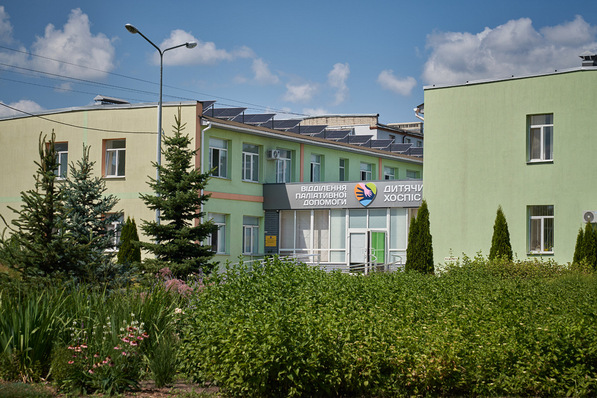Where are your customers and what sort of people take advantage of your services as a specialist? Are they mostly private customers or also contractors?
Torsten Hahn: Of course, our geographical focus is here on the area around Frankfurt/Main. But for attractive commissions we might define what we mean by ‘around’ slightly more broadly. And we have a similar degree of flexibility when it comes to our customer structure: about 70 percent private customers. Among them, storage is particularly attractive, because they want to become more green, and also self-sufficient. Or they want to lower their utility costs, ideally bringing the cost for electricity down to zero.
Are we already at that point?
It is still hardly achievable. But we also have a number of municipalities and commercial companies among our customers: For example, one is a packaging company with a 81-kilowatt installation and a self-consumption of 69,000 kilowatt hours just within the company.
How many of the installations do you equip with a storage system? How many storage systems have you installed so far?
Of course, the trend towards combining solar with storage has also affected us. I currently install 95 percent of my private-customer systems either including storage form the outset, or at least to allow retrofitting later. It is about 50/50. In this context, Kostal’s Plenticore plus is a flexible product that is ideal for customers that want to initially start out with just photovoltaics.
Which advantages do you see as the most important?
For the Plenticore plus, the customer is charged for the battery option only once he starts using it. It comes with a smart code to unlock that option. That makes it very competitively priced as a pure inverter – and besides, it gives the customer and me as the technician all the options. That is why we at Elektro Hahn generally always go with Kostal when it comes to battery inverters.
The Plenticore plus is a high-voltage inverter. What batteries do you use for it?
Batteries from BYD – most of all, because they are modular and require little space. By the way, that was already true for the Kostal BA in combination with BYD batteries. I myself am using that setup at home.
You were the first installing company to sell the Plenticore plus with the unlock code for connecting batteries. What were the requirements of the customer?
The enquiry came from a private customer and his wife and two children. Their home had an annual consumption of about 5,000 kilowatt hours and was equipped with an east-west-facing rooftop solar array. As the last few years have shown, that orientation is particularly favourable for integrating storage. Both when it came to the size of the intended installation and the orientation of the roof, the Plenticore plus 4.2 with its three MPP trackers exactly fitted these requirements.
How did you use the inputs?
We used two of the MPP trackers for either side of the roof and the third for connecting the battery. As that arrangement worked perfectly and the unit had entered the market just in time, I was able to supply these innovations straight away – of course, in combination with the BYD batteries.
It can happen that a first-time installation of a system can be a little tricky, like installing a prototype. How did the Plenticore plus work out for you?
Not only was there that perfect match between what the customer wanted and what the unit could deliver, but we also clicked at a personal level during the installation. Here a funny anecdote from when we switched the system on: To be sure, I contacted Kostal’s service hotline to ask for advice. The people there were even more apprehensive than I was, because putting an installation into operation so soon after the start of sales was a bit like a movie premiere – under real-world conditions. Together we were able to achieve a perfect result, albeit one that took slightly longer than usually.
What feedback did you get from the customer? Is he happy with the system you installed?
You bet he is. And to remind himself every day how happy he is, he descends to his basement at least twice a day to look at the display of his inverter. And that, although I included the inverter on Kostal’s free Solar Portal. So he could save himself the legwork. Or maybe he is inspired by his system: It keeps going and going and going.
How important is monitoring?
Free monitoring services, such as are provided through the Solar Portal or the Kostal app, mean a benefit for all: For the owner of the installation, because he can keep an eye on all the important data – but also for me as the technician, because it means that, at least in the first six months after switching on, I can understand what is going on and render assistance if needed.
What does a good battery inverter have to be capable of?
To me there are three key criteria: It has to be flexible in design, especially when it comes east-west-facing roofs, which our experience has shown to be ideal for the combination with batteries. The Plenticore plus ranges from 4.2 and ten kilowatts. This range of outputs leaves us almost limitless options for the private market. And then there is the simple way of adding a battery later. This option allows me to provide the customer with a future-proof unit without any extra cost. My customer can very easily add a battery later. And fourthly, monitoring has one great added benefit for the customers: They really like it. On the other hand, I am mostly convinced by the technical features.
This year at the Intersolar in Munich, Kostal presented a new model with three battery connectors for smaller commercial companies – purely AC-connected. Was that a good idea?
It was a useful improvement, especially for entering the SME market or for retrofitting existing installations. The latter in particular is a segment that is becoming increasingly significant for my company. (hs)
Stay informed, get our newsletter twice a week. Register here
Read more about solar modules.
Read more about solar mounting systems.
Read more about solar energy storage.







